Creating picture books is not always a solitary, lonely endeavor. Great books require great teams and where better to start than within the same home? Amy and Greg Newbold share their story, experience, and insight into how they work together, as husband and wife, in creating beautiful books for children. Join us as we gleam from their experience chasing, and dare I say reaching, the author and illustrator’s dream of publishing books.
Amy and Greg Newbold have published three books together, If Monet Painted a Monster (Tilbury House Publishers 2019), If da Vinci Painted a Dinosaur (Tilbury House Publishers 2018), and If Picasso Painted a Snowman (Tilbury House Publishers 2017). Amy is the third of four children and grew up in the Salt Lake valley near the mountains. She began writing stories in elementary school, but only recently admitted she is a writer. Amy prefers field trips to housework, and enjoys star-gazing, birding, hiking, playing board games, and traveling. Greg has been drawing and painting for a long, long time. Supportive parents fueled his artistic interests with plenty of supplies and encouragement. He sold his first piece of art in eighth grade.
Amy and Greg, it’s an honor to be able to learn more about such a dynamic duo and share in your author and illustrator journeys. Before we get into your fabulous upcoming release, If Monet Painted a Monster, let’s start where it all started. What got you into writing and illustrating and how did your childhood factor into your ultimate destination as a creative?
Amy: I think one of the things that influenced me creatively was taking road trips with my family. Often on road trips, there wasn’t much to do besides stare out the window. I loved books, but I got motion sick if I read in the car, so while my parents drove through mountains and deserts, I made up stories to keep myself entertained. At home, my siblings and I would act out elaborate stories in our backyard. I learned to read when I was four, and I wrote my first stories in elementary school.
Greg: Art has been an integral part of my life since my earliest memories. I remember going to a rodeo when I was very young, maybe five years old and for days after, I drew cowboys on bucking horses or roping calves. I would fringe the edges of these pictures with scissors to complete the western vibe. My dad worked at an ad agency and often brought home end rolls from the newspaper press checks. My siblings and I would roll them out on the unfinished basement floor and draw expansive battle scenes or underwater adventures.
As I got older, I remember being frustrated when my skills as a draftsman did not match what I was seeing. I once tried copying a superhero from a box of cereal and having my drawing fall woefully short. But my parents always encouraged me and I always had enough supplies to keep me going. They saw a passion in me and recognized how much better I was at my age than my peers. Eventually, my drawing skills caught up to my vision at the same time nearly all my friends and siblings found other interests. Sometime early in high school, I realized that people actually make art a career and I figured that was what I would do.
Many in the #WritingCommunity would advise AGAINST using your spouse as a critique partner (CP), but I don’t think you two have any way around this. What is your critique and feedback process like? How do you zero in on what looks or sounds best knowing any piece of feedback could be taken personally and affect much more than your next book release?
Greg: Amy has always been my best sounding board, so I don’t really see it as an issue. I trust her to tell me if something is not quite right. Sometimes she can’t quite pinpoint HOW something needs to be fixed, but she is rarely off when it comes to seeing that an issue exists. Of course nobody likes to be told their masterpiece isn’t working. That means more work and more problem solving, but I would rather hear that feedback when I have time to fix it than let something out the door that is not up to my standards. Since we both want the best product possible, it’s something we just work through together. I try to not take any criticism personally since I know none was intended. At the end of the day and when the picture is better, I know she was right. Over the years, she has become my most valued second set of eyes. I hopefully give her as much valuable feedback and support on her writing as she does with my art.
Amy: Greg has been working in the art world for many years and has experienced a lot of ups and downs. He is very understanding and encouraging. Greg is usually my first reader. He’s had to read some pretty awful drafts! He is a great brainstorming partner and I appreciate that. When we did our books together, we consulted with each other frequently, but at the end of the day, I had to let him be the illustrator and he had to let me be the writer. We help each other, but we also give each other room to do what we do best. In many ways, we’ve moved beyond having critiques feel personal, since we both want to create the best possible story or art. We trust each other. Besides, discussing work is a great excuse to go to lunch!
Your three books, If Picasso Painted a Snowman, If da Vinci Painted a Dinosaur, and If Monet Painted a Monster are masterfully done and so very creative. It makes me wonder, “Why didn’t I think of that?”. How did the idea of these three books come to be and can we expect more books along this same style of focusing on classic artists? Can you share any secrets of which artist may be focused on next? Are there any artists NOT on the table for any reason?
Amy: I got the idea for If Picasso Painted a Snowman in the Musee Picasso in Paris, France. Picasso was so innovative, and I wondered aloud what his snowman would look like. My sister told me I should write a book about it. Greg and I took our kids to several art museums when they were young, and I ended up writing the kind of book I always looked for in a museum gift shop. It took me several drafts to figure out what direction the book needed to take. I shelved it for a bit after getting some rejections in 2013, but it later found a home with Tilbury House Publishers.
The ending of the book was really important to me. It invites readers to create in their own style. One of our kids went to a very structured preschool program where all of the art projects were pre-planned. Basically, the kids were expected to assemble their art projects in a pre-determined way. Our child was frustrated, and so were we. I wanted kids to know that their individual creativity has value.
I didn’t originally plan on three books, but our publisher, Tilbury House, came back and wanted a second book before the first even released. For each book, we’ve chosen a “headliner” artist who has name recognition. Each theme needed to appeal to kids, and also be subject matter that famous artists were not likely to have painted.
Right now, we don’t have any other books planned in this series, although I am open to doing a fourth book. I would like to see a Kandinsky or Miro in one of our books. Van Gogh is a personal favorite of mine, and he’s in the first book, but he’d make a great headliner. In selecting the artists, I did a lot of research, and then Greg had final say on whether or not he could envision doing something in that particular style. I think I picked most of the artists in the first two books, and Greg selected more for the third book since he wanted to do a monster theme. As much as we love Norman Rockwell, he painted almost every subject imaginable, so I think he may be off the table. I haven’t convinced Greg yet to do a Vermeer.
Greg: If Picasso Painted a Snowman was all Amy’s idea and I will admit, I was a latecomer to the party. In the early stages, I had a hard time wrapping my brain around how it would work and if I could even pull it off. Painting in the styles of so many famous artists and capturing enough of their essence to convincingly convey each unique style was a monumental challenge. When I flipped the switch in my head and realized that not only could I do it, but that I could do it well, it became like a game. I had to boil down the aspects of each artist’s style that made them stand apart and then focus on those hallmarks.
Certain artists were so intimidating that I simply could not see myself succeeding. For example, the styles and methods of artists like Rembrandt and Vermeer are so technically complex and time consuming that I could not face attempting their work. Other artists like Andrew Wyeth had such a unique vision and confident application, that I took them off the table right away. Other artists fell outside the logical timeline of the group, so they were nixed.
Although each book does contain an outlier or two, it often became a matter of looking at the group of chosen artists as a whole. We wanted a better mix of women and ethnicities in the two follow up books than we had in Picasso and I think we achieved that balance. As far as a fourth book goes, Monet feels like a good resting point for the series at this point. Amy and I both want to pursue different projects after three straight years of creating art-style books, but if the right angle or idea pops up, or if demand merits another go at this series, I would be up for it. Never say never, right?

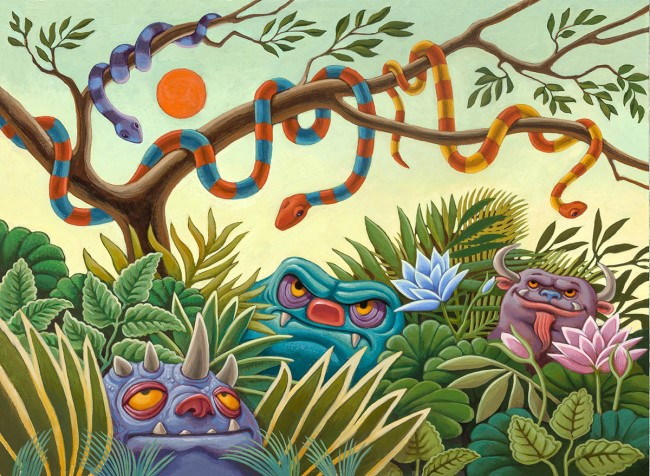
Both of you are seeking agent representation. What do you hope to gain from having an agent? What has book publishing been like without one?
Amy: I am working on a couple of YA novel projects, and also some “story” picture books that don’t fit into Tilbury House’s publishing niche. For me, an agent would be an asset in pursuing publishing opportunities for my other projects and in developing my writing career. Book publishing so far has been a wonderful journey. I didn’t realize until my first book was released that an author also wears a marketing hat. I have a better understanding of and appreciation for good editors and what they bring to a manuscript. I’ve always loved bookstores and libraries, but now, I understand even more the important role they play in sharing stories.
Greg: I have done books both with and without an agent and each book is different. The biggest advantage I see to having an agent is that it gains you access to the bigger publishers. Agents in today’s market act as the de facto gatekeepers and slush pile editors for all the major publishing houses. Don’t get me wrong. It’s great to be the big fish in the small pond with a mid-size publisher. We get a lot of attention and feel very valued by our publisher, Tilbury House. They gave our concept a chance when others passed and were able to get the books out on a much faster timeline that a bigger house. It’s also nice to call and have the person on the answering end actually know who you are and be excited to talk with you. It feels more personal than larger institutions. But I’ve worked with big publishing houses before, and I’d like to have the opportunity again. At a major publisher, there would be the chance of more lucrative advances and wider marketing reach.
Creating great books takes perseverance, patience, and certainly hard work. What helps you get into the zone of creativity to produce and refine your work? What usually hinders your focus and distracts you from the ultimate goal of delivering another beautiful book to store shelves?
Amy: I learned so much when I had to write a second book from scratch. It’s wonderful to feel a creative spark, but the truth is, writing is work, and sitting down to do the work is the most important thing. Deadlines are very motivating for me! When I need to revise something, I set it aside for a few days or weeks and give it some space. It helps me be more objective when I come back to the project.
On revisions, I look at big picture things first, like plot and character arcs. For picture books, it’s really important to consider word choices and page turns. When I am not feeling creative, I step away from writing for a day or two if I can. I think internal pressure to produce something great is a big hindrance and makes me procrastinate. I have to fight that.
My favorite way to recharge is to get outside somewhere away from my normal routine and distractions. I’m lucky to live in an area where incredible scenery is a short drive from my house. If I can’t get away, I escape into a good book.
Greg: Working for yourself has many perks but it also has its hazards. I have to treat it like a full time job. I try to get in a full day of work, just as anyone on the clock at a regular company would. People often mistakenly think that artists wait for that creative muse to strike to spur them to create their masterpieces. I think that’s a bunch of hogwash.
The biggest factor is the time and work you put in. For me, success in art has always been about hard work. In the “can I be an artist?” equation, talent is maybe 10-15 percent. The rest is hard work, being smart, and understanding what it takes to produce good art. Like anyone, I have my stretches when I’d rather be doing anything other than my work. Distractions are everywhere. Overgrown yards and unfinished projects are constant nagging reminders of things you could be doing instead. But deadlines and paychecks are great motivators. I like to eat, so there’s that.
Also, I am a perfectionist. I’m always reaching for that extra something that will push a piece over the top. Learning new techniques and approaches has always been an interest for me, so these books have been the ultimate challenge. Dissecting someone’s style is maybe the ultimate in self-directed learning. Diving into what makes each artist’s style identifiable and unique was daunting.
For some artists, there was no information whatsoever on their materials and working methods other than the finished art. For some other artists, imitating their technique and style would have been so cumbersome and time consuming, that I was forced to make a visual approximation. Sometimes this meant switching to another medium, like, from oil to faster drying acrylic, or from woodblock printmaking to digital. Ideally, I would have liked twice as long as I was given to master the various styles and complete each book, but you do what each project calls for and somehow the work gets done. I am proud of what I accomplished in these books. I like to think there are not very many artists out there that could have pulled it off.
Anyone who’s spent even a short amount of time within the writing or illustrating communities on social media knows how supportive other authors and illustrators can be. Are there any fellow authors or illustrators that have helped you along the way? Any you admire or respect? Any mentors to mention?
Greg: Anyone who has survived as long as I have in an art career has had countless mentors and idols. There are way too many artists I admire to give any kind of comprehensive list, but some of my influences in the illustration world from the golden age are N.C. Wyeth, Norman Rockwell, Maxfield Parrish, and J.C. Leyendecker.
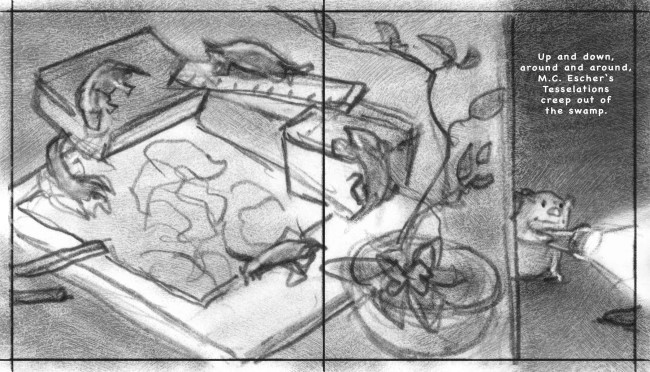
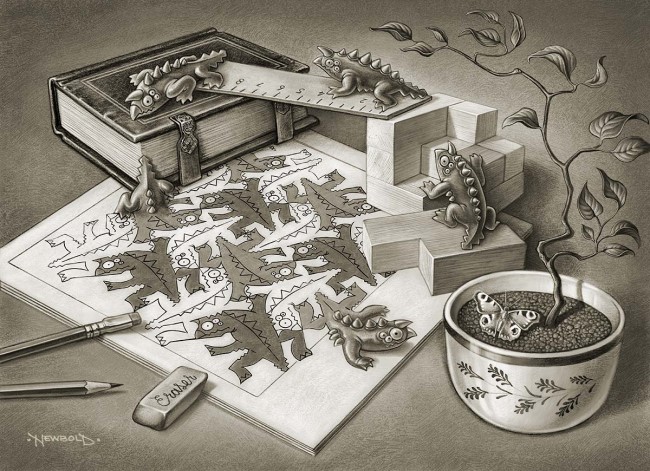
More recent artists whose work I love and who have inspired me include, C.F. Payne, Gary Kelley, Brad Holland and Mark English. All of them are masters of their craft and I have learned so much from them all. In the fine art world, I am increasingly drawn to artists like Maynard Dixon (also a former illustrator), Van Gogh, Grant Wood, Sargent, Sorrolla, The Canadian Group of Seven, Gary E. Smith and so many more.
My art mentors stretch way back to high school when Gene Coleman and Steve Bird allowed me to create my own projects when they had exhausted all they could teach me. In college, I learned so much from Robert Barrett, James C. Christensen (maybe the most unique voice in fantasy art the world has ever seen) and Richard Hull. In graduate school, I had the most amazing intersection of mentor and idol ever when both Gary Kelley and C.F. Payne became my instructors. Not to mention the inspiring mentoring I received from Hall of Fame illustrator Murray Tinkelman.
There are countless other contemporary painters and illustrators that I consider valued friends and mentors. I find artists to be, for the most part, very gracious and generous with their knowledge and encouragement. It’s a rough sea to navigate and I am grateful for all those who have pulled me into their boats. I try to do the same.
Amy: I confess that I joined the #WritingCommunity on Twitter for a pitch party contest, but I have interacted with so many wonderful people there, that I have stayed around. I am hesitant to try to list all the people who have helped or encouraged or inspired me because I am afraid I’ll forget someone!
Utah has a vibrant writing community, and I am lucky to have rubbed shoulders with some amazing writers. I have attended the Writing and Illustrating for Young Readers workshop a few times (@wifyr). The late Rick Walton was my first picture book mentor at that workshop and I am forever grateful to him for his encouragement and instruction. Last June, I took a novel workshop from author Rosalyn Eves (@RosalynEves), and she is an incredible teacher. She had so much helpful advice and great feedback on my YA manuscript.
Through local writing events, I’ve connected with some critique partners who are rapidly becoming good friends. I love Tara Lazar’s (@taralazar) blog and #Storystorm. She’s very generous in the writing community. I’ve also received help and encouragement from an amazing editor, Lisa Mangum, (@LisaMangum), and from author Carol Lynch Williams (@Carol_writer928). So many writers, editors, and agents have been generous with their time and expertise. You are a great support in the writing community as are Brian Gehrlein with Picture Book Spotlight (@BrianGehrlein) and Justin Colon (@JustinRColon) with #PBChat.
Let’s focus in on the craft of creating a beautiful book. Where do you start? How do you refine your draft? When do you know it’s ready for readers?
Amy: I wish I knew some shortcuts! I start with an idea and then see if it has potential. I develop plot points next and then character voice. Jon Eaton at Tilbury taught me it was okay to “overwrite,” because I can edit later, and that is useful advice. In the early stages, I worry more about creating a story that works than word counts. When the characters and plot are working, I’ll do multiple revisions looking at word choices and edits. After that, I’ll share my story with critique partners and beta readers. I always have more edits to do after getting feedback. When I’ve done everything I can to get something ready, I’ll put it out into the world and see what kind of responses I get. It’s a learning curve!
Greg: Picasso was all Amy’s idea. My task was to pull it all together visually and make it cohesive. One idea I contributed was to have a “tour guide” in Max the hamster. He was based on our daughter’s pet hamster and he is the thread that ties all the varied artist styles together and gives reason to the whole. Initially, Amy resisted the idea (much like it took some convincing for me to tackle the book) but she came around and now Max the hamster is the mascot for the whole series. I can’t see any of the books without him. For Monet, the publisher initially wondered if Max had run his course and floated the idea of leaving him out of the final book, but logic prevailed and Max remains.
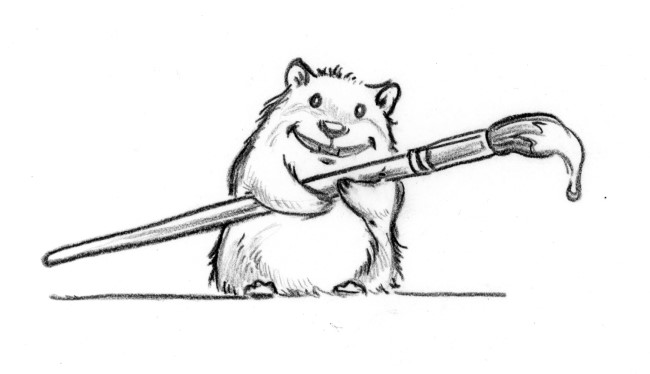
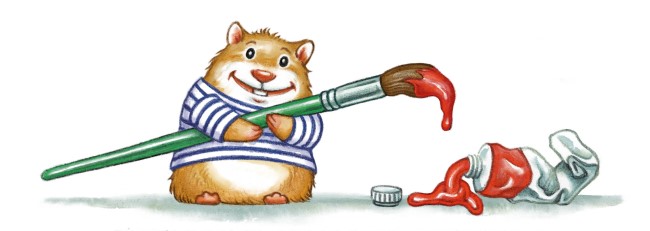
The first thing I do when visualizing a book is to break down what text will go on each spread. I take the page count and lay out where I think the logical page turns and proper reveals need to happen and then make rough thumbnail drawings just to get the ideas down on paper. Since this was a collaborative project, Amy was included in deciding what made sense. We were very fortunate that the publisher was quite hands off from an art direction stand point. They saw all sketches along the way, but for the most part, trusted my vision to make it all work visually. Once sketches are approved, it’s just a matter of creating the artwork. The map is established and I follow it.
The covers were the only place we had some hang-ups. The cover for Monet was particularly challenging. I had gone through two or three rough ideas and was 80% finished with what I thought was the final painting for the cover, when I realized it wasn’t working. We had a conference call with the editor, in which I was not seeing in my head what was being described. Meanwhile, Amy was doodling out a thumbnail sketch on the back of a library receipt. She pushed it across the table and whispered “like this!” It was rough, but it was dead on and that sketch turned into the final cover design.
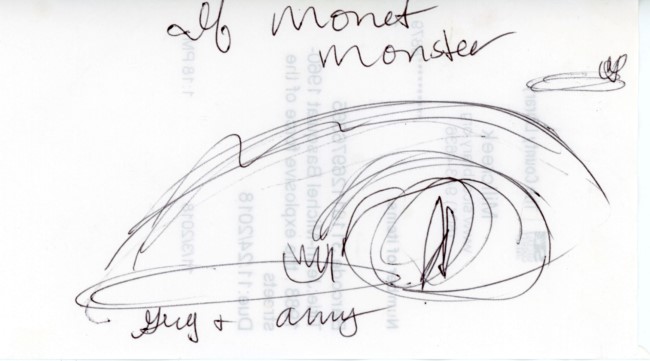
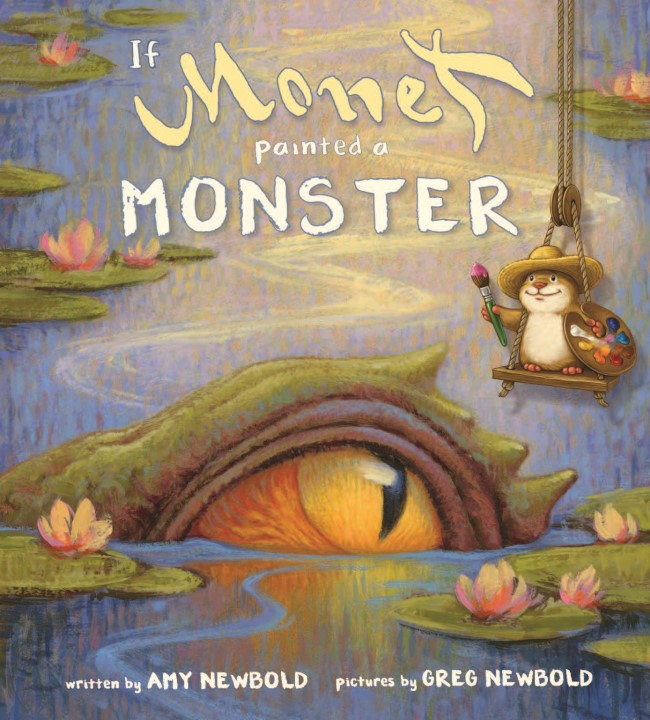
Your picture books are all kid-friendly and informative. What’s led to your interest in creating children’s books and taking the time to visit schools? Do you feel you’ll stay in children’s books for the long haul or are you considering any other genres?
Amy: Kids are so open to the world around them. I love seeing things through their eyes. I hope I get to continue visiting schools and sharing with the students. They are inquisitive and creative and I get back from them as much as I give. I think I am in children’s books for the long haul. I’ve never outgrown reading picture books, and as long as I have ideas, I’ll continue to write them. I also love the potential with teen characters, and have several ideas for YA novels with two novels in the works. Novel writing is a very different challenge than writing a picture book but writing novels has made me a better picture book writer.
Greg: From an illustration standpoint, I really enjoy picture books. They pose a unique challenge. With books, you have to create a cohesive set of pictures, that when strung together, tell a story. In most other illustration applications, you have one picture to tell your story. I like to think it’s a lot like film making. Each spread or page is a scene in your film. As an artist, you have control over every aspect from set design, character and costume design, and lighting, to color, cropping and focus. Every aspect of that picture is in your control, so if it doesn’t work, there’s only you to blame.
It’s a lot of pressure, but a lot of freedom and consequently, a lot of fun. School visits are a great litmus test for your books. If the kids like them, you probably did your job. I enjoy seeing all the art that kids have created that has been inspired by our books. Inspiring kids to have the freedom to create art is the bottom line. It’s rewarding to see our books as the jumping off point to so much creativity.
Would you share your proudest book moment with us? What, where, and when did it happen that you just went WOW? What’s been a very discouraging moment on the road to publication and what did you do to get through it?
Greg: There are always low moments in creating the art for any book project. The prospect of working for weeks and months on a book can be overwhelming, but the payoffs are great. When that first box of copies arrives, it’s very satisfying to hold it in your hands and realize “I did this”. That never gets old, no matter how many books you’ve done.
One of my best memories on this journey was when we went to the MPIBA independent booksellers convention in Denver to pitch If Picasso Painted a Snowman. We had just five minutes in front of tables full of booksellers to explain what our book was about and why they should carry it in their stores. The response was overwhelmingly positive and we had so many people thank us for creating the book. That kind of validation is priceless. I also love getting pictures back from schools and individuals who have used the books in the classroom to inspire different art projects. The creativity the kids display is amazing.
We made these books because we couldn’t find anything like them when our kids were young. It’s gratifying to know your work has inspired so many young people to pick up a pencil or a brush and create something.

Amy: I received an email from a tutor who had worked with a student for many years. That student had some learning challenges which made school work tedious and difficult. The tutor said they read If Picasso Painted a Snowman because this student liked art. When they were reading the biography about Monet in the back matter, the student really connected. Monet doodled during school and was not a straight-A student. The tutor wrote to tell me that this student was so excited to read that about Monet. It helped the student understand that it was okay to not love school and to not be the same as everyone else. To know my book made a difference for that one student made it all worth it.
Discouraging moments are easy to come by! I received some great advice from author Kathryn Purdie. She told a class to determine why it is you write, because when hard days come, understanding why you do it might be the only thing that keeps you going. I think of that on the hard days. Publishing and reviews and rejection and sales can all be discouraging. I often feel inadequate. If I wrote only to be published, it would be easy to stop when things get hard. But I realize that I am happier when I write. I write because I love it, so I’ll continue to do it.
We can’t wait until the October 1st, 2019 release date of your latest children’s book, If Money Painted a Monster (though it’s already available for pre-orders!). What’s on the horizon for each of you? What do you hope to accomplish in the next 1-2 years? What can we expect from you 3-5 years down the road?
Amy: I am currently sending queries on some picture book manuscripts and am working on revising my YA novel. In the next year or so, I’d love to have a literary agent and have new book projects on submission. In 3-5 years, I’d love to have a novel or two ready for publication, and have another picture book (or two) published.
Greg: For me, I want to land a literary agent and do another book in the next couple of years. I have a few manuscripts in the works and hopefully that will pan out as well and I’ll officially become an author/illustrator. I hope one of those projects is another collaboration with Amy, but time will tell. I am also passionate about painting landscapes and am intent on making inroads into the gallery painting world. I hope somewhere in the mix will be a one-man show or two that I can hang my hat on. Mostly, I simply hope to keep creating art. It’s something that makes me happy and fuels me. What more could an artistic soul wish for?
If you found this interview with Amy and Greg Newbold helpful, insightful or encouraging, please consider doing the following 3 things.
- Subscribe to this website using the email subscription box in the sidebar (or below if you’re on a mobile or tablet) so I can let you know when more content like this is available.
- Share this interview with your friends using the social media buttons provided. If you enjoyed it, others will too.
- Don’t leave without sharing your thoughts in the comment section below. What did you think about Amy and Greg’s experience publishing children’s books and working together as author and illustrator? Did anything resonate with you? Where are you in your journey of writing or illustrating?
Connect with Amy Newbold at https://www.amynewbold.com/ or on Twitter @AmyNewboldBooks. Stay up to date with Greg Newbold at http://gregnewbold.blogspot.com/ and see some of his online portfolio at https://www.illoz.com/newbold/.
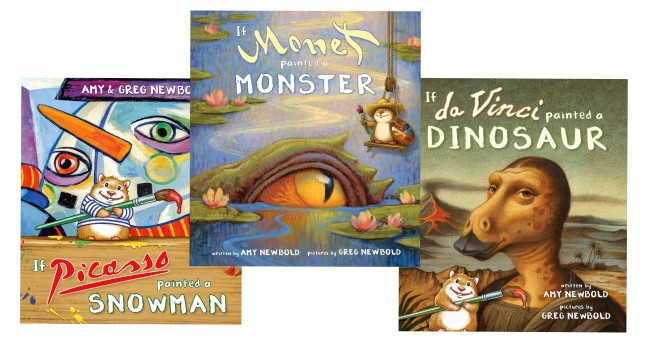
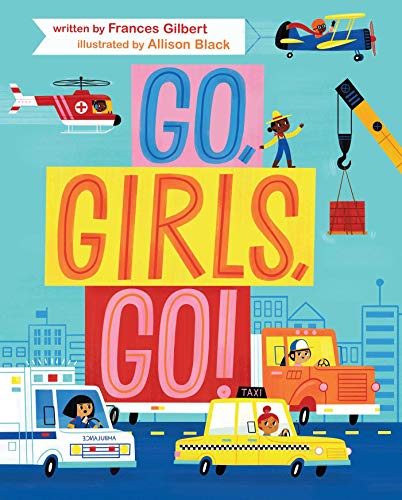
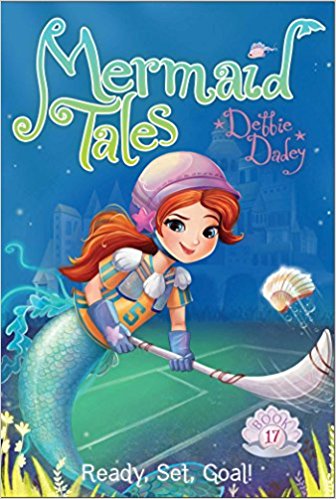
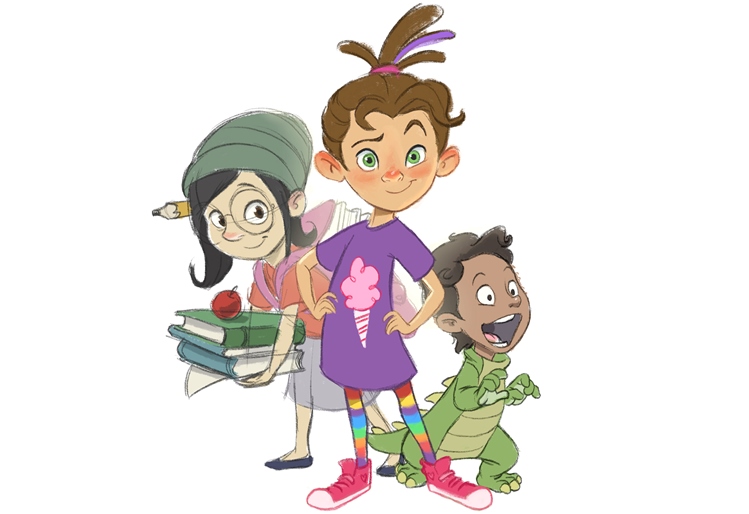
Kaylynn Johnsen
September 10, 2019I loved here about their collaboration process. It could be rough being married to your critique partner but they make it work.
And I agree, Greg is one of very few, if any, artists who could take on such a challenging task.
Rhys Keller
September 10, 2019Right?! I completely agree. What a talented, wonderful duo filling shelves with beautiful, inspiring picture books. Amy and Greg make the dynamic work and kudos to the entire Tilbury House Publishers team that brought these books into the world.